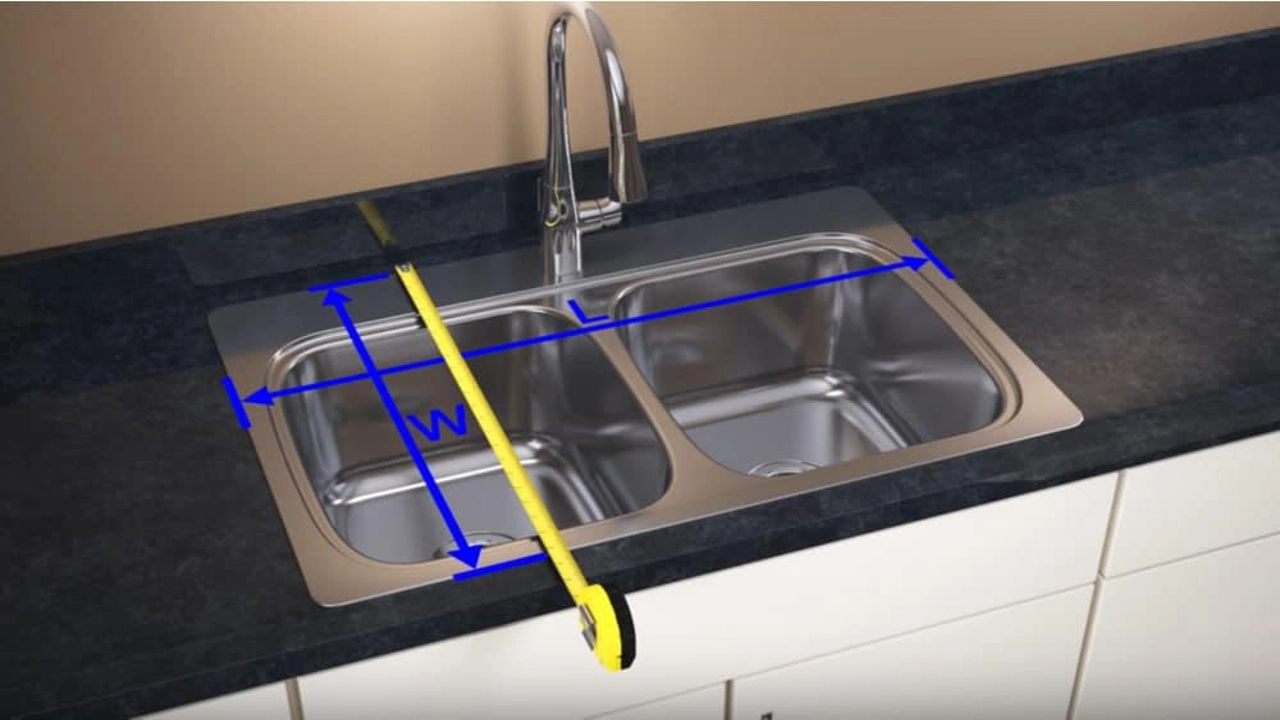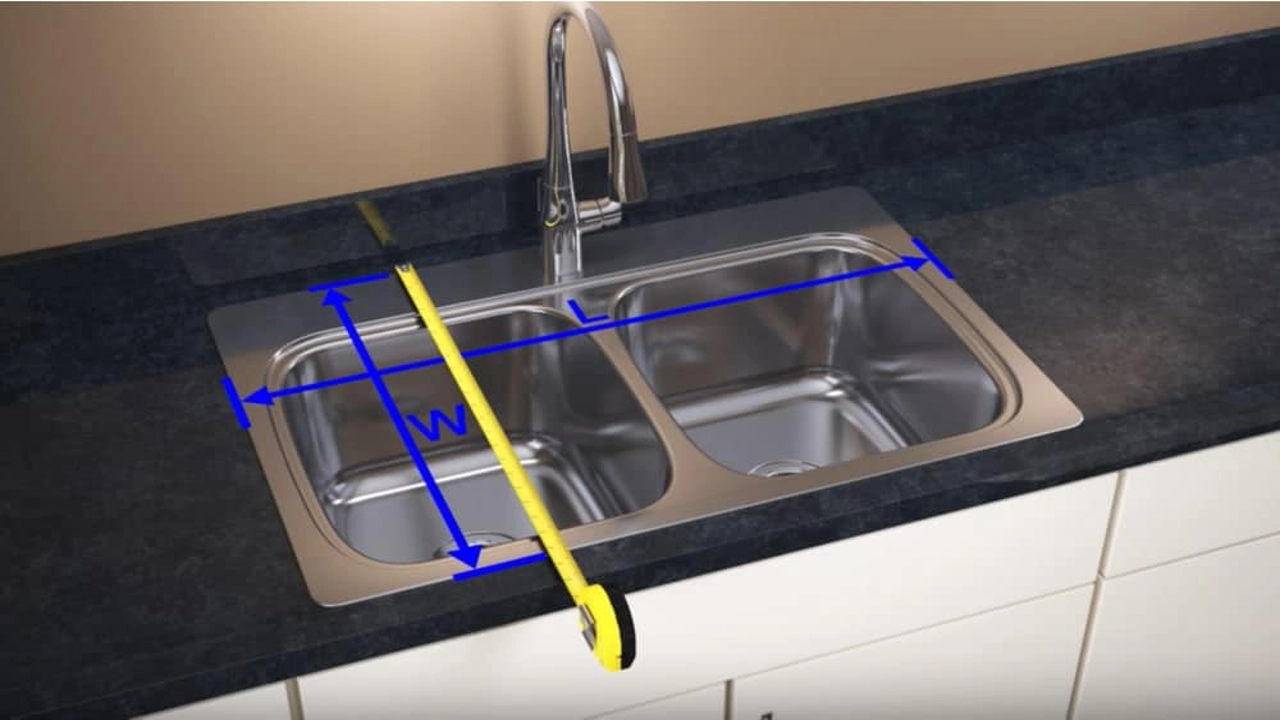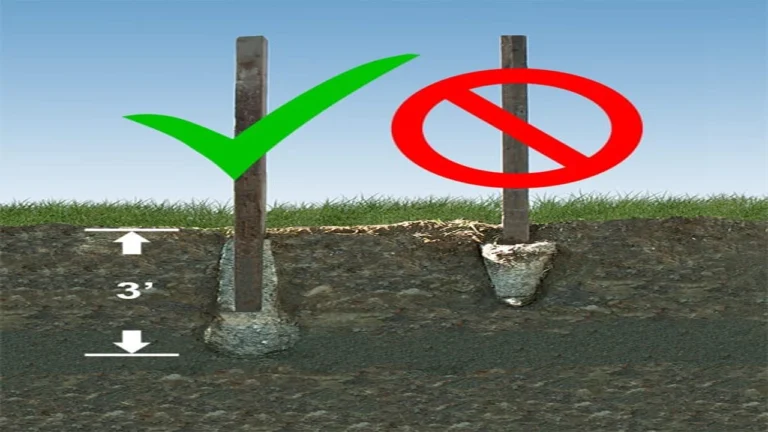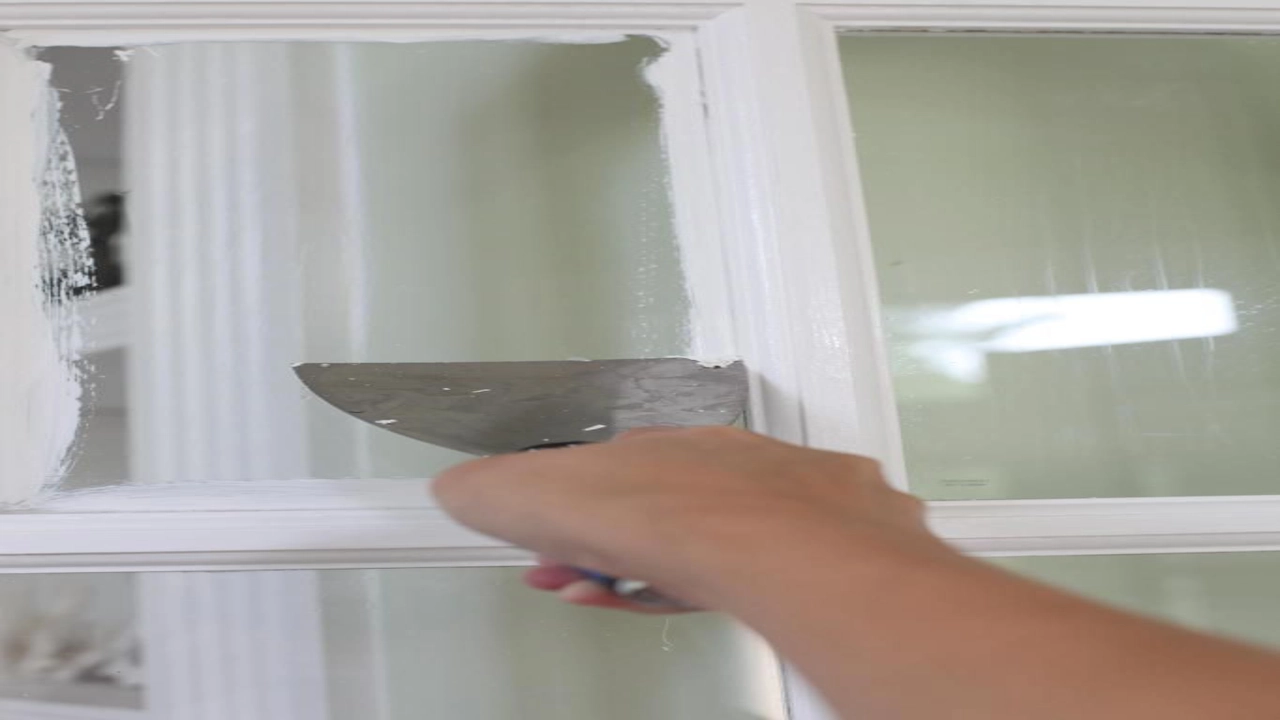Measure your kitchen sink like a pro the ultimate guide
How to measure a kitchen sink is essential for ensuring a perfect fit during your kitchen remodel. The first step is to measure the existing sink’s dimensions, including the width, depth, and bowl size. You’ll also need to determine the distance from the countertop to the sink’s bottom. Next, measure the cabinet opening where the sink will be installed. This will help you find a new sink that fits seamlessly into the existing space. Finally, consider the size of your countertop and the surrounding appliances. By taking accurate measurements, you can avoid costly mistakes and ensure a successful kitchen renovation.
how to measure a kitchen sink the ultimate guide

Getting Ready for a New Kitchen Sink? Measure It Right!
Planning a kitchen remodel or simply looking to replace your old sink? Measuring your kitchen sink correctly is a crucial step to ensure a smooth installation and a perfect fit. Getting the right measurements will prevent frustration later on. So, how do you measure a kitchen sink? Let’s break it down.
What to Measure:
The “how to measure a kitchen sink” process involves a few key measurements:
- Basin Size: This is the most important measurement. You’ll want to know the length, width, and depth of each basin.
- Overall Dimensions: This includes the overall length and width of the entire sink.
- Faucet Hole Placement: You’ll need the distance between the faucet holes (if applicable) and their position relative to the edges of the sink.
- Edge Thickness: Measure the thickness of the sink’s lip or edge, which is the part that sits on the countertop. This is important for determining the depth of your cutout.
Tools You Need:
To measure your kitchen sink, you’ll need a few simple tools:
- Tape Measure: A standard tape measure is the most important tool for this task.
- Notebook and Pen: Record your measurements accurately in a notebook.
- Level: Use a level to ensure the sink is properly positioned on your countertop.
How to Measure a Kitchen Sink:
Step 1: Measure the Basin Size
Start with measuring the length and width of the basin. Place the tape measure at the widest points of the basin, making sure to measure the inside dimensions. For depth, measure from the bottom of the basin to the top edge of the sink. If your sink has multiple basins, repeat this process for each one.
Step 2: Measure the Overall Dimensions
Next, measure the overall length and width of the entire sink. Place your tape measure along the outer edge of the sink, including the sides and the backsplash (if applicable).
Step 3: Measure Faucet Hole Placement
If your sink comes with pre-drilled faucet holes, measure the distance between them. Also, measure the distance from the center of each hole to the edge of the sink.
Step 4: Measure Edge Thickness
The edge thickness is the last critical measurement. Measure the thickness of the sink’s lip or edge where it meets the countertop.
Step 5: Record Your Measurements
Once you’ve collected all your measurements, record them carefully in your notebook. Make sure to label each measurement to avoid confusion.
Step 6: Double Check Your Measurements
It’s always wise to double-check your measurements. You can also take a picture of the measurements labeled directly on the sink to ensure accuracy.
Why Measuring Your Kitchen Sink is Important:
Measuring your kitchen sink correctly is crucial for several reasons:
- Proper Fit: Accurate measurements ensure that your new sink fits perfectly in your countertop cutout.
- Avoiding Mistakes: A properly measured sink avoids costly errors and the need to return or exchange it.
- Correct Placement: Measure your sink carefully to determine the ideal placement on your countertop, ensuring it’s balanced and accessible.
Variations in Measuring:
Depending on your sink style, you might need to adjust the measuring process slightly. Here are some common variations:
- Undermount Sinks: For undermount sinks, you’ll need to measure the thickness of the countertop to ensure you have enough space for mounting.
- Drop-In Sinks: Drop-in sinks typically require a larger cutout to accommodate the sink’s lip.
- Double Bowl Sinks: For double-bowl sinks, you’ll need to measure each basin separately.
Other Tips for Measuring Your Kitchen Sink:
- Consider Existing Cutouts: If you’re replacing an existing sink, you can use the old cutout as a template for your new one.
- Consult a Professional: If you’re unsure about measuring your kitchen sink correctly, consider hiring a professional.
- Check Manufacturer Specifications: Some manufacturers provide detailed instructions for measuring and installing their sinks.
Related Search Queries:
- How to measure kitchen sink cutout
- How to measure a kitchen sink for a drop-in
- How to measure a kitchen sink for an undermount
- How to measure kitchen sink for a new countertop
- Kitchen sink measurement guide
- How to measure a kitchen sink for installation
- How to measure a kitchen sink for a new cabinet
- How to measure kitchen sink for a double bowl
- How to measure a kitchen sink for a single bowl
- Kitchen sink dimensions chart
By understanding how to measure a kitchen sink correctly, you can ensure a smooth and successful installation process. Accurate measurements will help you avoid costly mistakes and ensure your new kitchen sink fits perfectly in your countertop.
is your kitchen sink the right size you might be surprised
Planning a kitchen remodel or simply looking to replace your old sink? Knowing how to accurately measure your kitchen sink is crucial for a successful project. This ultimate guide will walk you through the steps, ensuring you get the perfect fit and avoid costly mistakes.
The Importance of Accurate Measurements
Before you start shopping for a new kitchen sink, you need to know exactly what you’re working with. Accurate measurements will prevent you from purchasing a sink that’s too small or too large for your countertop. A sink that’s too small will be difficult to use and may even be a safety hazard. A sink that’s too large will look out of place and may require you to modify your countertop, adding extra time and expense.
What to Measure: Understanding the Dimensions
You need to measure several key dimensions to ensure a perfect fit:
- The countertop opening: This is the most important measurement. It’s the space where the sink will actually sit. Measure the length and width of the opening, as well as the depth of the countertop. This will determine the maximum size of the sink you can purchase.
- The cabinet space: Make sure the sink will fit comfortably inside the cabinet. Measure the length and width of the cabinet opening, as well as the depth of the cabinet itself. This is particularly important for double or triple bowl sinks.
- The faucet: If you’re planning to install a new faucet, measure the width of the faucet base. This will help you choose a sink with the proper number and placement of holes for the faucet.
- The drain location: Measure the distance from the edge of the countertop to the center of the drain hole. This will help you ensure that the sink drain aligns properly with the existing drain pipe.
How to Measure Your Kitchen Sink: A Step-by-Step Guide
- Gather your tools: You’ll need a measuring tape, a pencil, and a notepad.
- Clear the area: Make sure there are no obstacles around your sink, such as dishes, appliances, or other clutter.
- Measure the countertop opening: Place the measuring tape along the inside of the countertop opening. Measure the length and width of the opening, taking note of any curves or angles. If your countertop is not perfectly rectangular, it’s best to measure the widest and longest points.
- Measure the depth of the countertop: Place the measuring tape vertically at the edge of the countertop opening, extending it down to the bottom of the countertop. This will help you determine the depth of the sink you can accommodate.
- Measure the cabinet space: Measure the length and width of the cabinet opening, and the depth of the cabinet. This will confirm that the chosen sink will fit comfortably within the cabinet.
- Measure the faucet base: If you’re planning on installing a new faucet, measure the width of the faucet base, which will be the distance between the centers of the faucet holes. Ensure your chosen sink has the right number and placement of holes.
- Measure the drain location: Measure the distance from the edge of the countertop to the center of the drain hole. This will ensure that the sink’s drain aligns properly with the existing drain pipe.
Understanding Sink Dimensions
Once you have your measurements, it’s important to understand what they mean in relation to sink dimensions. Most sink manufacturers provide these dimensions in their product descriptions. Understanding the different measurements will ensure you choose a sink that fits perfectly:
- Outside dimensions: The overall length, width, and depth of the sink, including the rim or lip.
- Inside dimensions: The usable space within the sink bowl.
- Mount depth: The distance from the bottom of the sink to the underside of the countertop.
- Backsplash height: The height of the sink’s backsplash, which is the portion of the sink that extends up the back of the countertop.
- Flange diameter: The diameter of the sink’s rim, which is the portion that sits on top of the countertop.
Important Tips for Measuring Your Kitchen Sink
- Double-check your measurements: It’s always a good idea to take multiple measurements and compare them to ensure accuracy.
- Consider the sink’s mounting style: There are different types of sink mounting styles, including drop-in, undermount, and farmhouse sinks, each of which requires specific measurements. Be sure to research the type of mounting style you need before you begin measuring.
- Allow room for installation: Remember that the sink will need to be installed, so you’ll need to leave a bit of extra space around the countertop opening.
- Check for potential issues: Inspect the countertop for any cracks, chips, or uneven surfaces. If you find any issues, you’ll need to factor them into your measurements and potentially consider a different sink style.
Using Your Measurements to Choose the Perfect Sink
Now that you have all the measurements, you can start shopping for a new kitchen sink! Use your measurements to narrow down your choices and focus on sinks that fit your space. You can also use online resources and guides to find sinks that are compatible with your countertop material and installation style. When in doubt, consult a professional for assistance.
Finding the Perfect Sink for Your Kitchen
With the right information and a bit of planning, you can find the perfect kitchen sink for your needs. Remember, accurate measurements are the key to success. By following the steps outlined in this ultimate guide, you can avoid costly mistakes and ensure that your new sink is a perfect fit for your kitchen.
Measuring Your Kitchen Sink: A Q&A
Q: Why do I need to measure my kitchen sink?
A: Knowing the exact measurements of your current sink helps you choose the right replacement. You need to make sure the new sink fits the cutout in your countertop and that it has the desired features, like a single or double bowl.
Q: What do I need to measure?
A: You need to measure the length, width, and depth of your current sink. You also need to measure the opening in your countertop.
Q: How do I measure the length and width of my sink?
A: Measure the longest and widest points of the sink basin, ignoring any edges or curves. You’re aiming for the overall size of the basin.
Q: How do I measure the depth of my sink?
A: Measure from the top of the sink rim to the bottom of the basin. Make sure to measure the deepest part of the basin if it has a sloping design.
Q: How do I measure the opening in my countertop?
A: Measure the length and width of the cutout in your countertop where the current sink is installed. You’ll need these measurements to ensure the new sink will fit.
Q: What if my sink is a custom shape?
A: If your sink has an unusual shape, like a curved or angled design, take several measurements at different points. You can also take a picture of the sink and the countertop opening for reference.
Q: What if my sink has multiple basins?
A: Measure each basin individually and note the overall length and width of the sink including any space between basins. You also need to measure the opening in your countertop for the entire sink.
Q: What do I do with all these measurements?
A: Take your measurements to a home improvement store or online retailer to find a replacement sink that fits your specifications.
Conclusion
Now that you know how to measure your kitchen sink, you’re ready to start planning your next kitchen project! Remember, accurate measurements are crucial for a successful renovation. Take your time, use the right tools, and don’t hesitate to double-check your work.
We hope this guide has been helpful. Let us know in the comments if you have any questions or tips of your own. Share this post with your friends and family who are planning a kitchen makeover, and let’s get those renovation dreams rolling!







